Considéré –à juste titre- comme le plus grand luthier français avec Nicolas Lupot, Jean Baptiste Vuillaume (1798-1875) va tout au long de sa carrière, avec l’aide des meilleurs ouvriers de son temps, copier les plus grands maîtres italiens des 17ème et 18ème siècles tels que Stradivarius, Guarnerius Del Gesù, Amati (plus rarement) et Gio Paolo Maggini…
Créateur infatigable, on dénombrera à sa mort en 1875 un catalogue de plus de 3000 instruments (sans compter les archets) réalisés dans son atelier ce qui est tout à fait considérable. Si la plupart des instruments fabriqués dans l’atelier de Vuillaume possèdent une étiquette ainsi que des signatures manuscrites à l’intérieur, certains en sont totalement dépourvus. C’est le cas du violon présenté par l’Hôtel des Ventes de Vichy à l’occasion de ses grandes ventes d’instruments du quatuor, du 30 novembre au 2 décembre 2010.
Ce bel exemplaire a été conçu en modèle Guarnerius Del Gesù dont il porte une étiquette, vraisemblablement au début des années 1840. L’inspection endoscopique très minutieuse de l’intérieur du violon n’a révélé aucune signature manuscrite (ni date, ni numéro). Il semble que Jean Baptiste Vuillaume ait cherché tout particulièrement à se rapprocher du modèle copié.
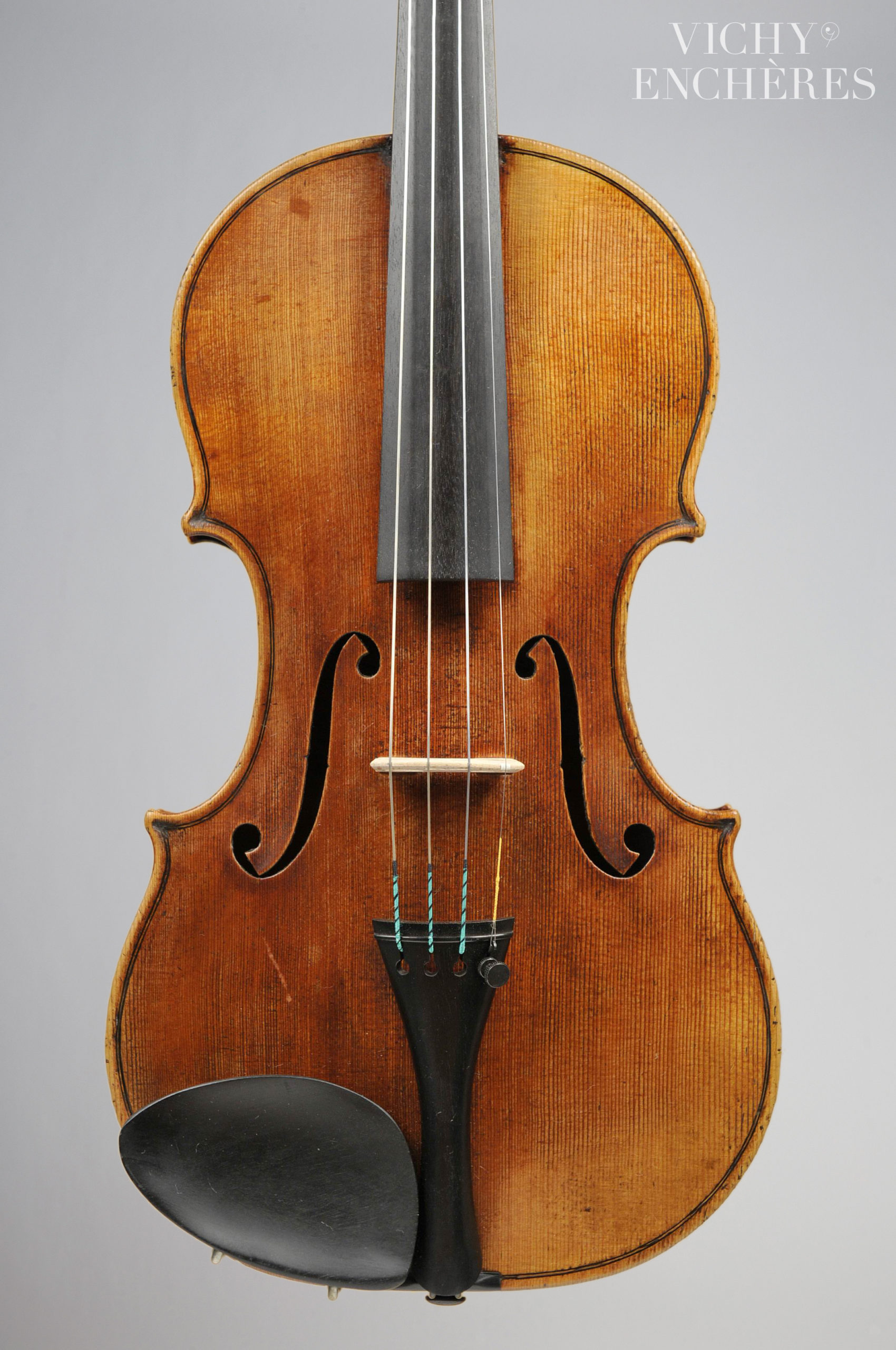
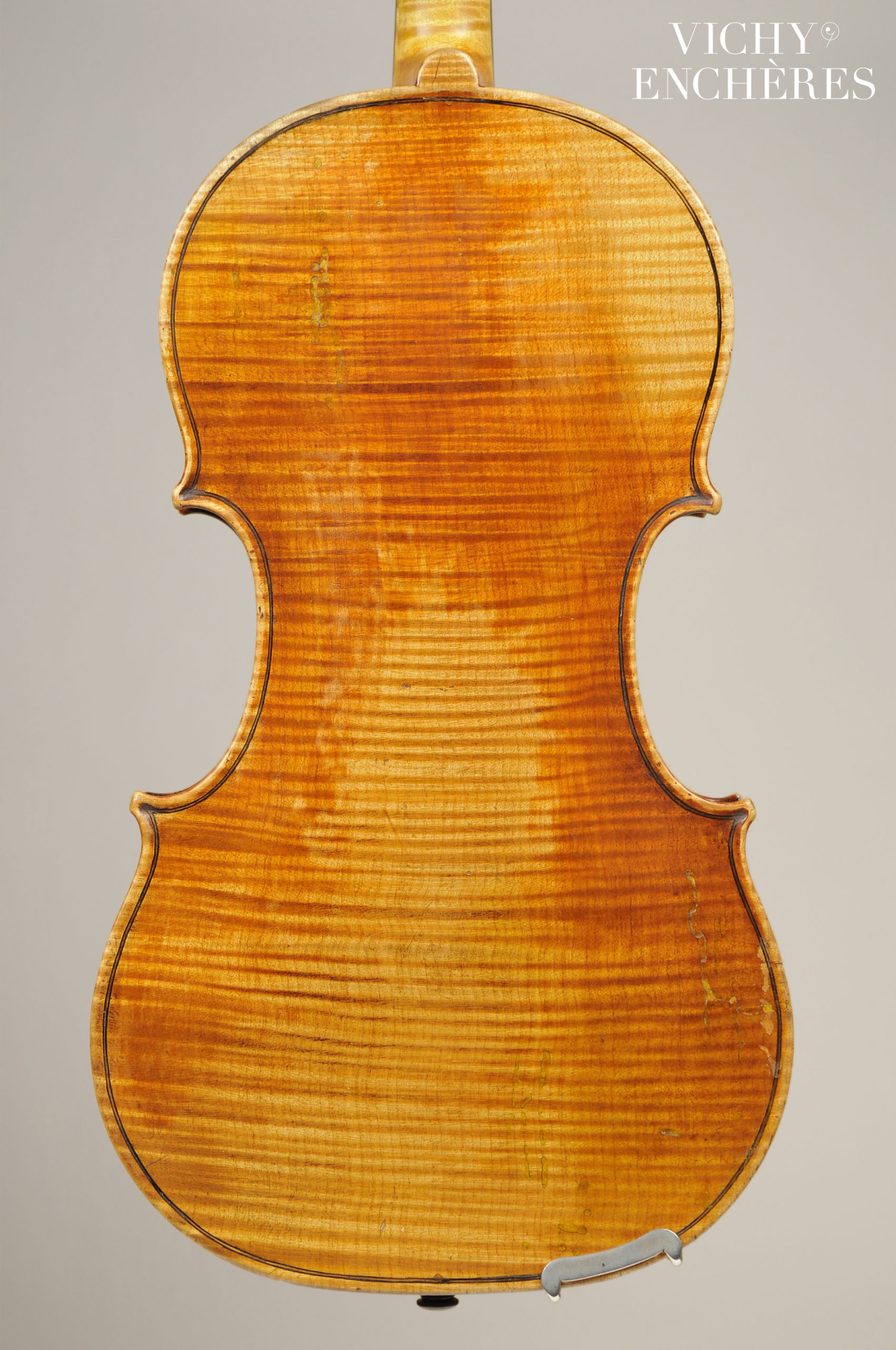
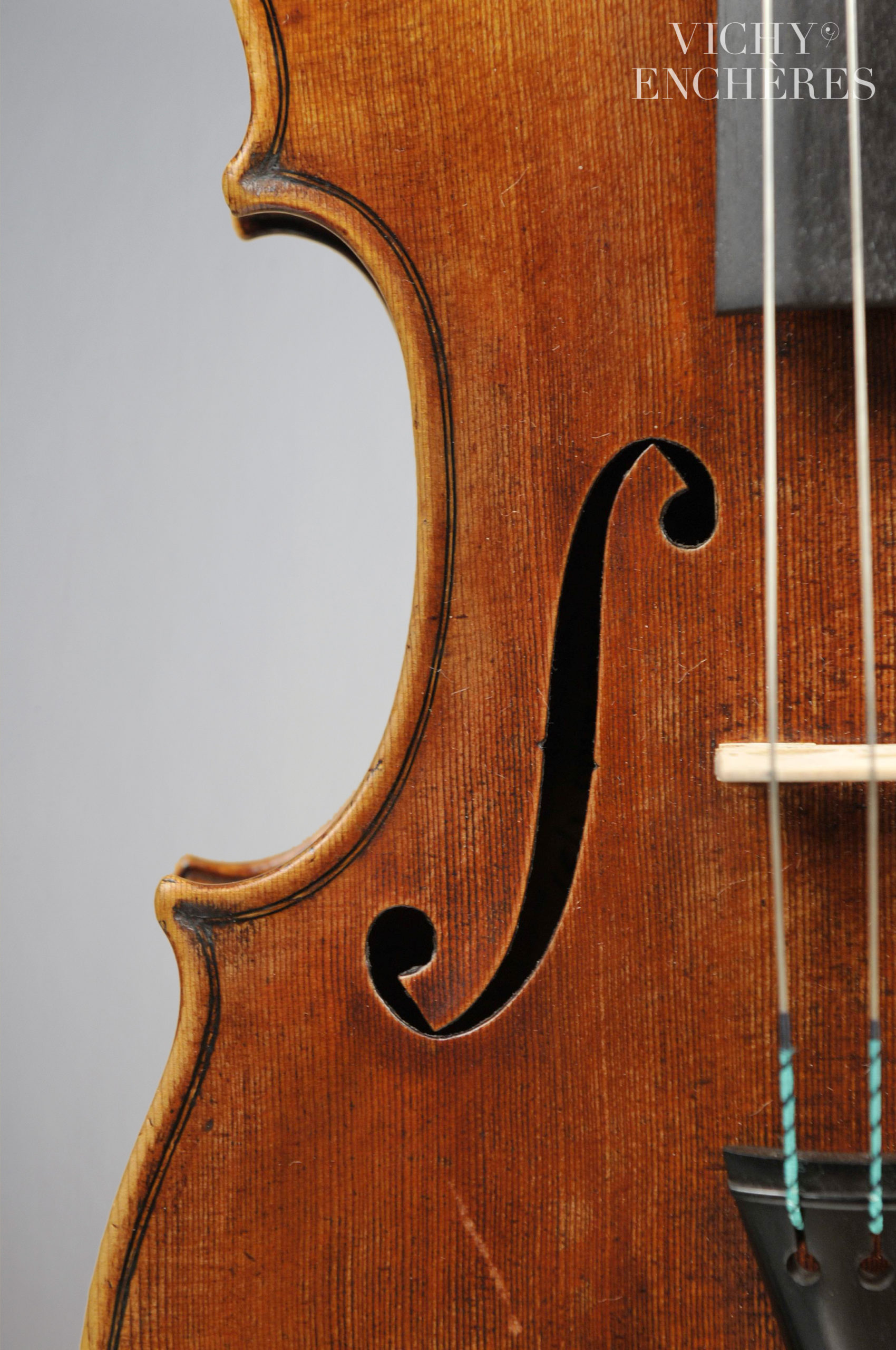
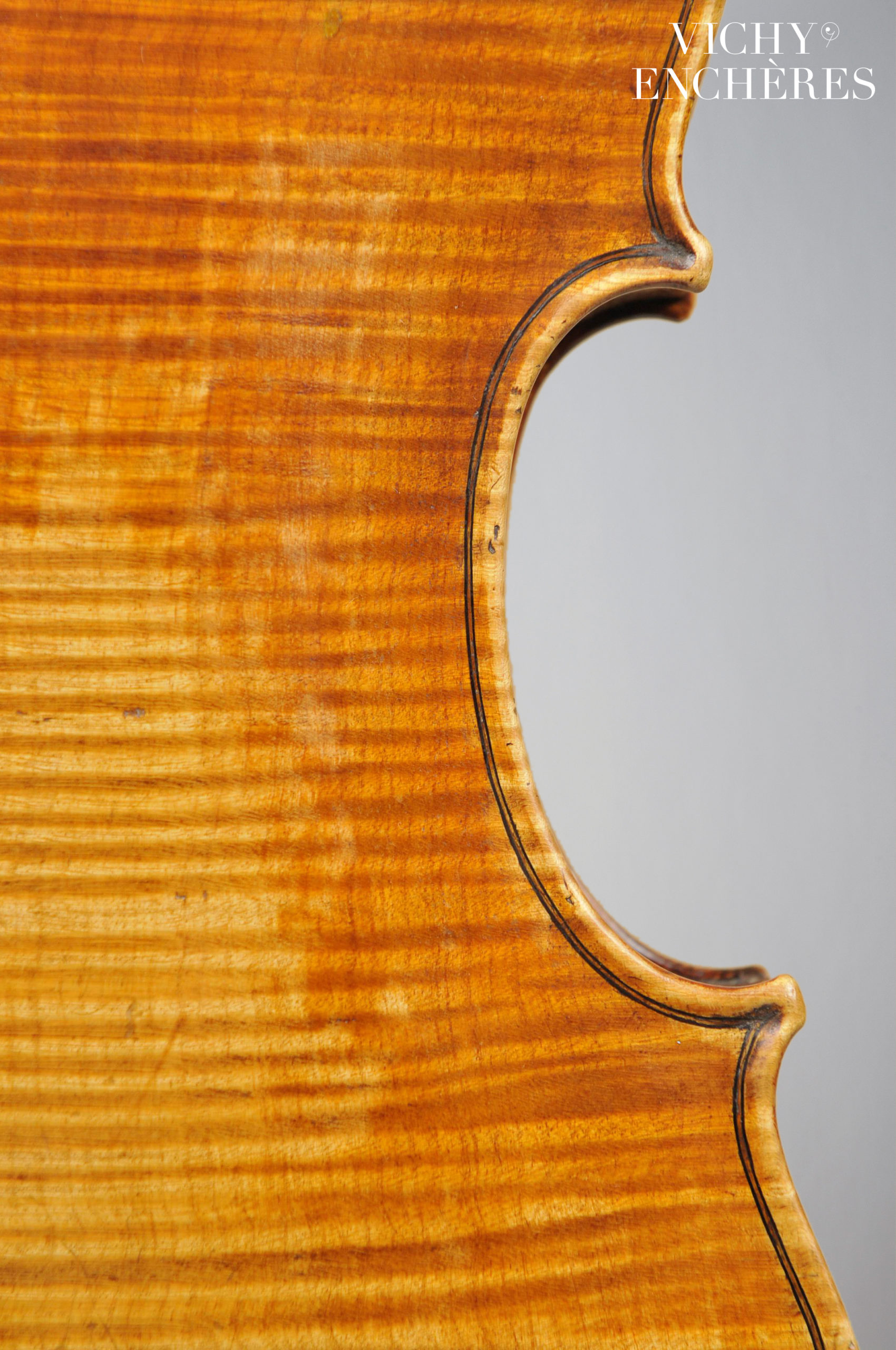
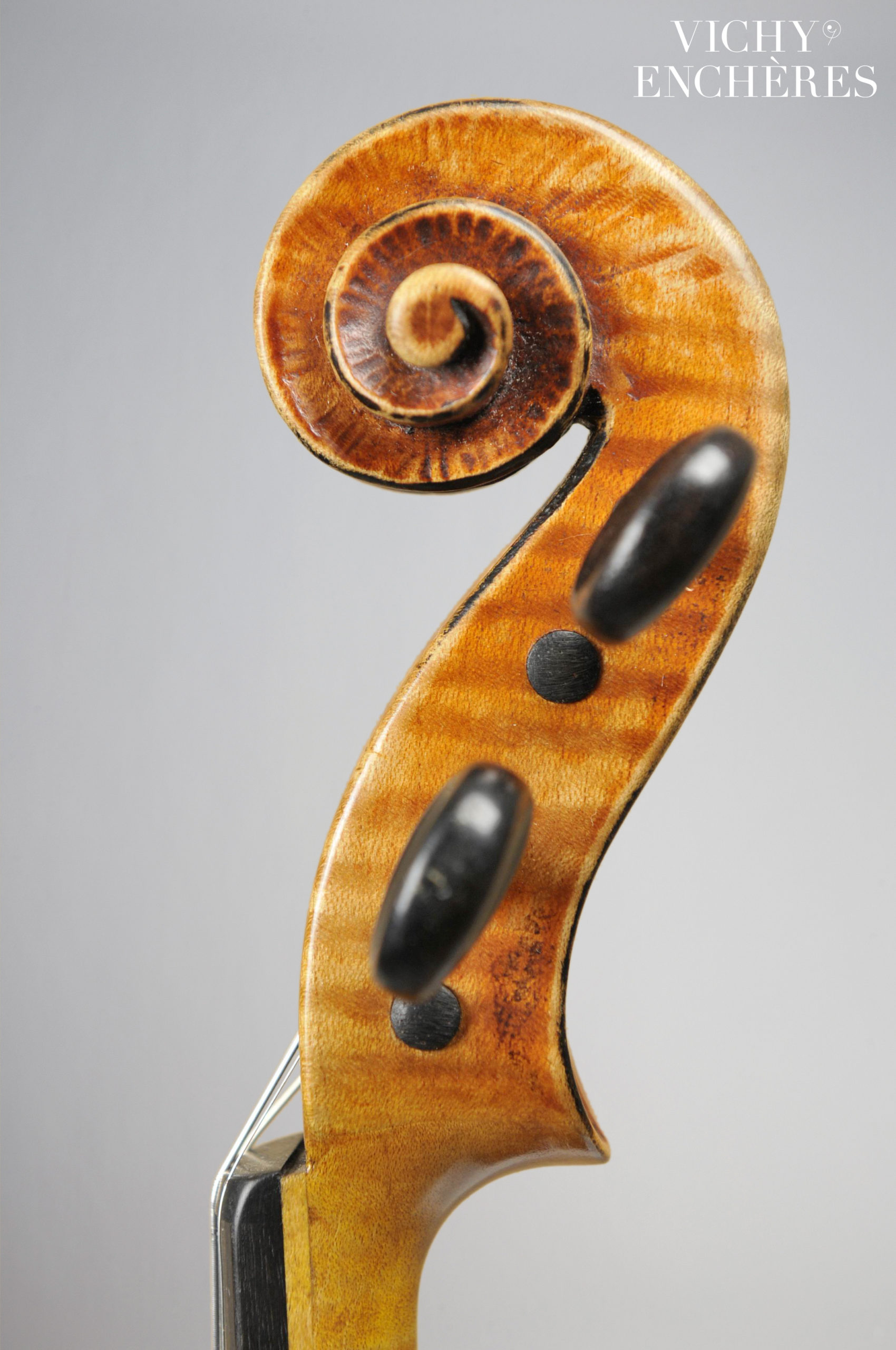
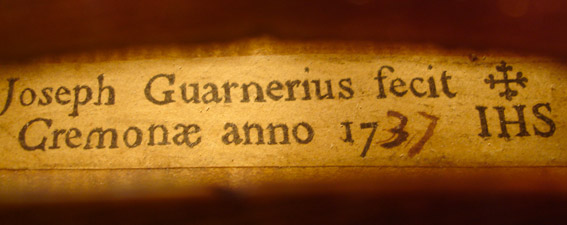
Certains détails dans la conception ont été exagérés. Ainsi, peut on distinguer sur la volute de petits coups réalisés à l’aide d’une petite gouge et laissés volontairement apparent ce qui confère à la tête du violon un aspect « brut » . On retrouve assez souvent ces petit coups de gouges dans les volutes de Guarnerius Del Gesù.
L’incrustation des filets de la table et du fond est irrégulière avec des manques à certains endroits. On retrouve également de petits coups de gouges dans les coins, autre caractéristique des instruments de Guarnerius Del Gesù.

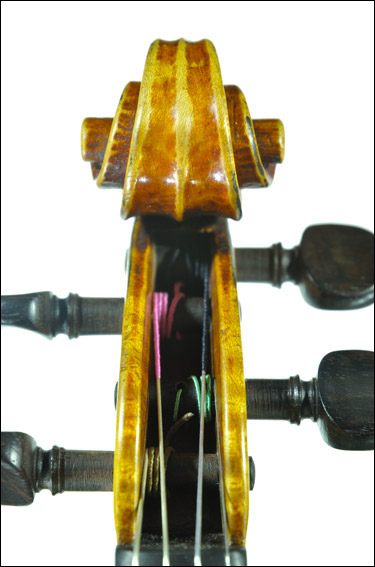
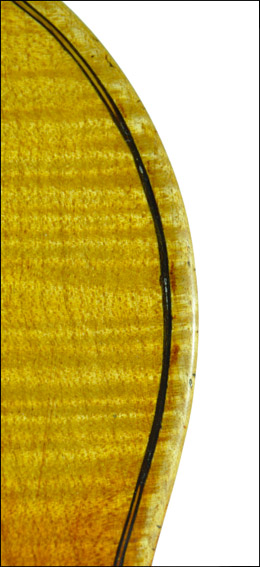
L’utilisation d’un bois d’érable piqué au vers pour le fond demeure assez mystérieuse. Vuillaume a-t-il voulu accentuer l’effet antique de ses copies? Ne s’agit-il que d’un choix mécanique ? Difficile d’être tout à fait catégorique à ce sujet. L’auteur peut néanmoins témoigner de plusieurs exemplaires avec fonds piqués aux vers « d’origine » toujours utilisés pour des modèles en imitation réalisés avant 1858.
Le vernis, d’un beau brun orangé typique de Vuillaume a été volontairement appliqué en dégradé sur le fond et sur la table dans la zone du démanché et de la mentonnière. Ce procédé superbement réalisé sur cet exemplaire permet de recréer artificiellement l’usure du temps.
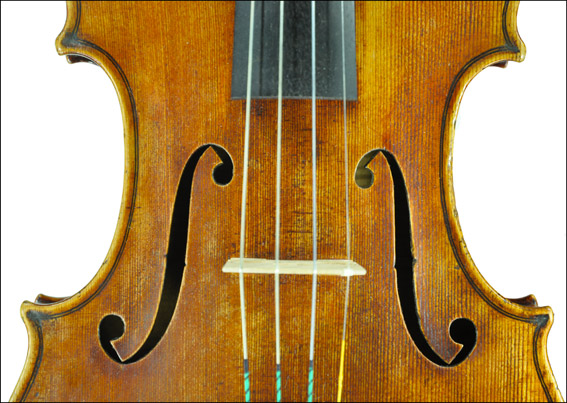
Un dernier détail qui caractérise les belles copies de Jean Baptiste Vuillaume est sa fameuse « moustache noircie ». Ce procédé –artefact supplémentaire dans le domaine de l’imitation- permet de simuler les couches de colophane et de poussières accumulées sur la table entre les deux ouïes qu’avait pu observer Vuillaume lorsque les premiers instruments italiens furent visibles à Paris au début du XIXème siècle. On connait d’ailleurs la technique exacte employée par Vuillaume pour réaliser cet effet grâce à une lettre datée du 1er juillet 1872 envoyée à son frère Nicolas François de Bruxelles dont nous reproduisons ici la teneur :
« (…) Quant à l’affaire des moustaches fondues, rien n’est plus facile. On broye à l’huile siccative sans vernis, une couleur brune de la terre de sienne calcinée avec une pointe de noir et avec la paume de la main, on tape jusqu’à ce que le fondu soit parfait. »
Lettre de Jean Baptiste Vuillaume datée du 1er juillet 1872 envoyée de Bruxelles à son frère Nicolas François Vuillaume.
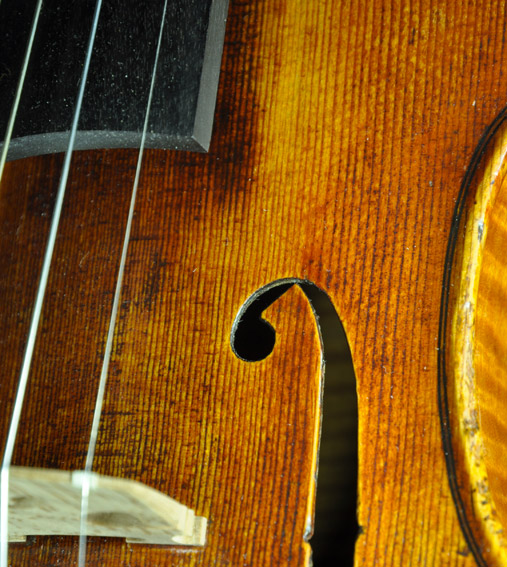
Malheureusement, un certain nombre de ces fameuses moustaches ont disparu aujourd’hui et ce à cause de multiples nettoyages effectués au fil du temps par des luthiers « trop scrupuleux ». C’est probablement ce qu’il s’est passé dans le cas du violon présenté ici.
En regardant sous la touche dans sa partie supérieure, on peut encore apercevoir une couche noire assez épaisse preuve irréfutable de la présence ancienne d’une moustache typique de Vuillaume sur la table d’harmonie du violon.
Jean Baptiste Vuillaume (1798-1875), who is, alongside Nicolas Lupot, rightfully considered as the greatest French violin maker, spent his entire career, with the assistance of the best craftsmen of his time, copying the greatest Italian masters of the 17th and 18th centuries, including Stradivari, Guarneri Del Gesù, Amati (less frequently) and Gio Paolo Maggini.
Vuillaume was a tireless craftsman, and upon his death in 1875 his records indicated that over 3,000 instruments (excluding bows) had been made in his workshop, which is quite remarkable. While most of the instruments made in the Vuillaume workshop bear a label as well as handwritten signatures inside, some are completely devoid of them. This is the case of the violin included in Vichy Encheres’ fine sale of string quartet instruments, which will be held from 30 November to 2 December 2010.
This fine example was modelled after Guarneri Del Gesù, of whom it bears a label, and was probably made in the early 1840s. A very meticulous endoscopic inspection of the inside of the violin revealed there was no handwritten signature (or inscription with a date or number). It seems in this instance that Jean Baptiste Vuillaume was particularly keen to reproduce as faithfully as possible the example he copied.






Certain typical features of Del Gesu’s making have been exaggerated. For instance, the volute has small dents made with a small gouge which have been left unfinished on purpose in order to give the head of the violin a “raw” appearance. These small gouge marks are often found in volutes by Guarneri Del Gesù.
The inlay of the purfling on the front and the back is irregular, with gaps in certain places. There are also small gouge marks visible in the corners, another characteristic of Guarneri Del Gesù’s instruments.



The use of maple with woodworm holes for the back remains a mystery. Did Vuillaume seek to reinforce the antique effect of his copy? Is this just a case of picking the next available wedge of wood? It’s hard to be certain. We can however attest to having come across several examples of instruments by this maker with original woodworm holes, which were all copies of great masters made before 1858.
The varnish, of a beautiful orange brown colour typical of Vuillaume, was deliberately applied in gradients in the areas on the front and back in contact with the player’s hand and chin. This antiquing, superbly carried out on this example, artificially recreated the wear and tear which would have occurred over a period of time.

A final detail that is typical of the most accomplished copies by Jean Baptiste Vuillaume is his famous “blackened moustache”. This process – another trick in the art of imitation – allowed Vuillaume to simulate the layers of rosin and dust accumulated on the front between the two soundholes, which he noticed when he studied the first Italian instruments that arrived in Paris at the beginning of the 19th century. We also know the exact technique used by Vuillaume to achieve this effect thanks to a letter dated 1 July 1872, sent from Brussels to his brother Nicolas François, which reads:
“(…) As for producing the melted moustaches, nothing is easier. One has to grind, with drying oil devoid of varnish, a brown colour of burnt sienna with a hint of black, and apply it with the palm of the hand, until the melted effect is perfect.”
Letter from Jean Baptiste Vuillaume dated 1 July 1, 1872 sent from Brussels to his brother Nicolas François Vuillaume.

Unfortunately, a number of these famous moustaches have now disappeared due to multiple cleanings carried out over the years by overzealous luthiers. This is probably what happened in the case of the violin presented here.
It is still possible to see, in the upper bout of the front under the fingerboard, a fairly thick black layer, which is irrefutable proof that the violin would have had originally a typical Vuillaume moustache on its front.